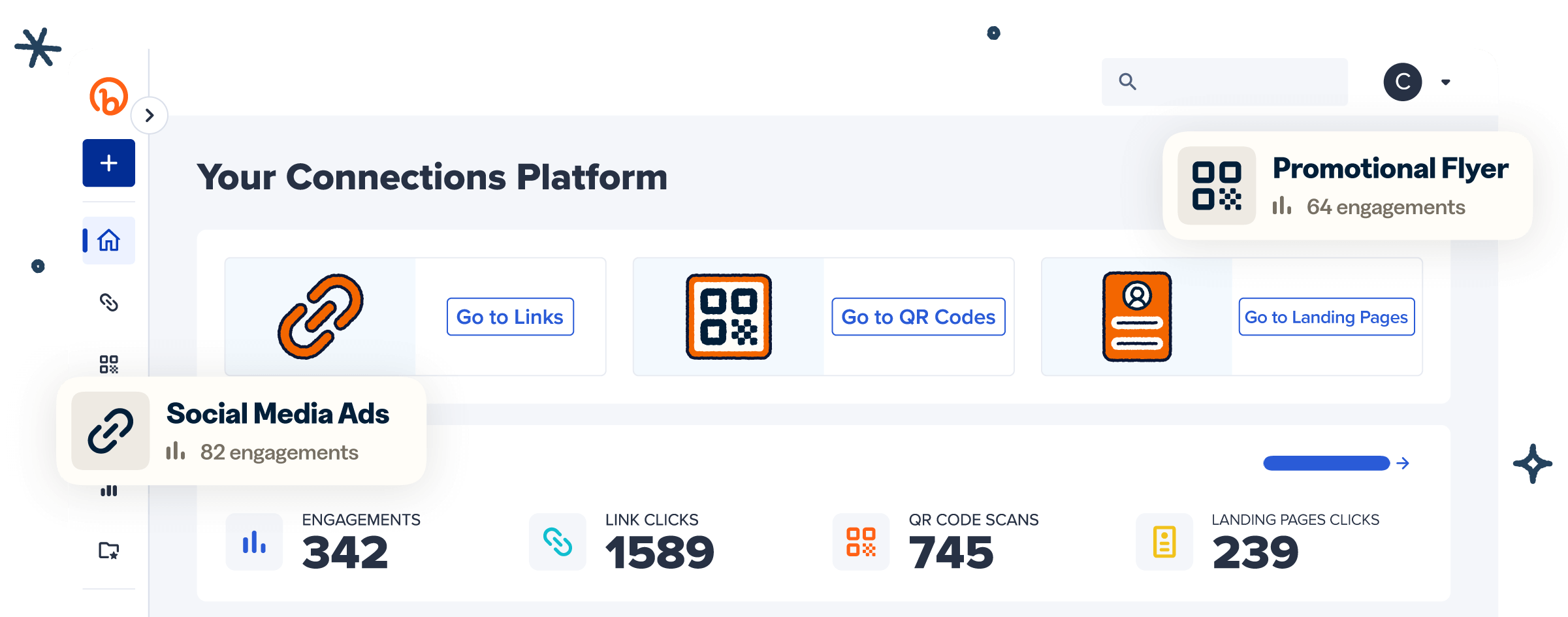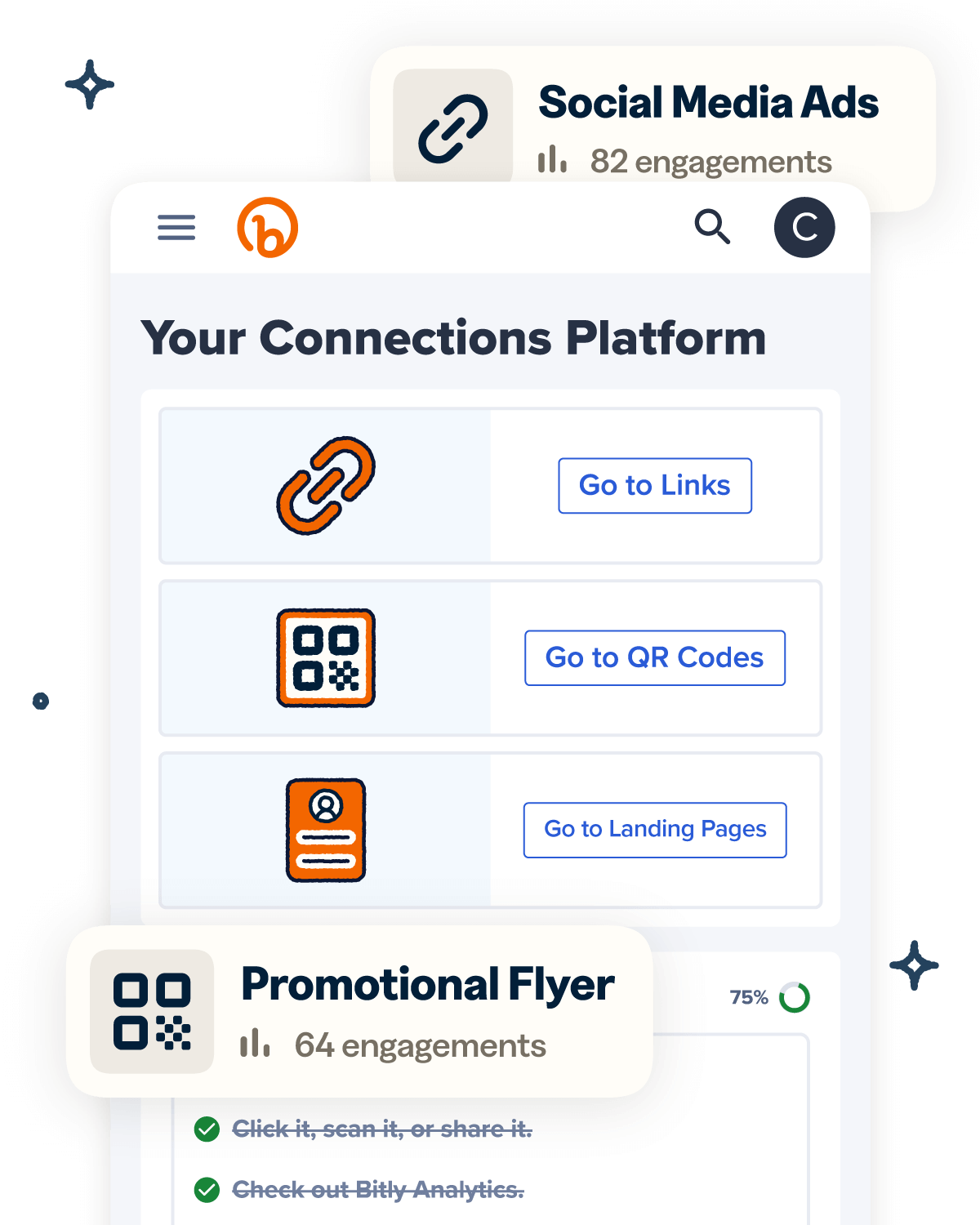Ridesharing apps were built to transform the taxi industry—making rides easier to find, book, and pay for. The days of waiting for a cab to drive past or lining up at a taxi stand are long gone.
Since the first ridesharing companies emerged in the 2010s, they’ve continued to add new features, such as integrations with public transport, better route planning, and even autonomous vehicles.
But some of the biggest improvements come from the smallest changes. QR Codes are only a few inches tall, but they’ve already begun to revolutionize payments, security, customer service, and even the post-ride experience.
Note: The brands and examples discussed below were found during our online research for this article.
Why ridesharing companies are adding QR Codes to their services
For ridesharing apps, speed and convenience are usually what matter most to users. Quick Response Codes allow customers to hail a ride, verify the driver’s identity, make a payment, or check the route with a single scan using their smartphone camera.
Let’s take a closer look at why ridesharing companies are so keen to embrace QR Codes.
Making it easier for passengers to hail a ride
Booking a ride through a rideshare app is fairly simple, but QR Codes take that convenience to the next level. Instead of opening up your app or typing in your website URL and navigating to the booking page, passengers can scan a code using their smartphone camera and go straight to your book-a-ride landing page.
It’s a powerful, cost-effective, and convenient strategy that removes friction from the process of hailing a ride, enabling you to capture more sales and improve customer satisfaction. And it’s especially useful if you operate in an area that sees a lot of tourists or travelers who may not be familiar with the local rideshare options.
Improving driver-passenger verification
Ridesharing apps are often perceived as safer than other transport services, but safety and security are still a concern for both passengers and drivers.
Late in 2024, Uber announced that it would start verifying riders in order to protect drivers from financial scams. Several U.S. cities, such as New York City and Chicago, have run public awareness campaigns to educate passengers on the risks of unauthorized drivers.
QR Codes offer a fast, flexible way to verify identities. A driver could display a unique QR Code in the window, which passengers scan to verify their ride before getting into the vehicle. Likewise, you can provide riders with their own unique codes that the driver can scan to verify they’re picking up the right person.
Reducing friction in the payment process
Remember when taxis would only take cash? Today, contactless payments are the norm thanks to their speed, safety, and hygiene.
They’re faster because there’s no need to count out cash or manually enter credit card details, and also safer since payment details are encrypted. Plus, there’s no physical contact involved—ideal for anyone worried about germ control.
Speeding up the payment process is a powerful way to improve customer touchpoints. In addition to improving customer satisfaction, you can also use contactless QR Code payment pages as an opportunity to thank customers and ask for a review.
Providing instant access to support and ride details
Just like booking rides and making payments, QR Codes can streamline customer order management. You can use them to direct customers to their journey details, driver’s profile, payment receipt, a review page, or customer service.
Other transportation services already use QR Codes for this purpose. Many airlines have replaced paper boarding passes with QR Codes that contain your flight details and seat assignment, and a quick scan gets you through the airport gate.
However, ridesharing apps can take the technology a step further. You can also offer QR Codes for drivers to access useful information—such as a customer’s rating or app support if something goes wrong.
How ridesharing apps use QR Codes to improve the experience
QR Codes can be valuable long before someone books a ride, helping them download your rideshare app, sign up for an account, or access other membership benefits and modes of transport. You can even use them to recruit more drivers.
Quick access to app downloads and new user signups
Before you can get bookings and collect payments from customers, they have to sign up for your app. QR Codes can make it easier for people to find, learn about, and download your rideshare app through the linked landing page.
You can display QR Codes via any print or digital media, including billboards, posters, display screens, city guides, maps, and public transport tickets. They also work well for social media and online display ads.
Take this witty example from French app Heetch. During the 2024 Paris Olympics, they ran a tongue-in-cheek campaign encouraging tourists to download Uber—so that Heetch rides would still be available for locals! They even included a QR Code to download the Uber app.
Driver recruitment and onboarding
You can’t run a ride-hailing app without drivers. With an increasing amount of training, security, and paperwork involved, the recruitment process can be slow and frustrating.
QR Codes make it easier by offering quick links to signup forms, training resources, and application guidance.
For example, the Think Pink campaign aims to recruit more female taxi drivers in the U.K., where fewer than 2% of taxi drivers are women. They raise awareness by partnering with local taxi firms and using bright pink vehicles.
And while it might be hard for people to memorize a phone number or website off the side of a vehicle, a QR Code allows them to find out more about the campaign with just one scan.
Promoting partnerships with other businesses
Rideshare companies often collaborate with local hospitality businesses, attractions, and tourism boards. You can support each other with featured adverts, referrals, or even discounts to encourage visitors.
Hospitality businesses are already using QR Codes in partnership deals, and your rideshare app can too. In 2023, the Marriott Renaissance Hotels chain launched a virtual concierge that works through QR Codes. When guests scan a QR Code in the lobby, it opens up a text conversation with the concierge to recommend and book local experiences.
Providing safer and more efficient ridesharing options
Some of your customers’ journeys will be more complex than a quick 10-minute ride. They might plan to grab a ride after taking a train or vice versa. They might want to carpool to save on money and carbon emissions or even rent a bike for the final mile of their journey on a sunny day.
Even transport authorities have started using QR Codes to streamline ticketing, accept contactless payments, and manage their fleets. In exchange, they can create more efficient systems and learn more about how people move around the city via QR Code analytics.
In a similar way, you can use QR Codes to direct passengers toward flexible local transport options and then track scan metrics to understand their journeys better.
How QR Codes improve security and prevent fraud in ridesharing
According to reports from major rideshare players like Uber and Lyft, over 99.99% of rideshare trips are completed without any safety issues.
But when there are millions of rideshare trips taken each day (28 million from Uber alone, on average), that tiny percentage of incidents still has a real-world impact. Fortunately, QR Codes can also help protect drivers and passengers from danger or fraud.
Verifying driver and passenger identities
Both drivers and passengers should feel confident they’re in the car with the correct person. However, borrowing or selling accounts, spoofing identities, or sharing misleading information can happen.
Most of the big ridesharing apps have now introduced ID checks. Drivers can prove their identity regularly with live photo checks, while apps like Lyft and Uber invite riders to upload proof of ID to their accounts.
QR Codes can make the authentication process even easier. When a driver picks up a ride, both people can confirm their identities by scanning QR Codes from each other’s phones. These might be one-time-use codes generated for a single ride, or each driver and rider could be assigned a unique code that lives in their profile. The QR Codes could link to either a secure, ride-specific verification URL or a static user profile URL so drivers and riders are assured they’re with the right person.
Preventing unauthorized ride pickups
There have been cases where unauthorized drivers try to pick up rides using fake credentials or clones of legitimate apps. For example, they might spot someone who looks like they’re waiting for a ride, pick them up, and then display a fake app screen with a fraudulent payment system to trick the passenger into entering payment details.
Using QR Codes reduces this risk. While an unauthorized driver might be able to fake an app screen, it would be much harder to copy a single-use unique QR Code that confirms the real driver’s identity. Ride-hailing apps should encourage users to always ask for QR Code ID verification to keep them safe from unauthorized pickups.
Enhancing payment security
Since passengers share sensitive data with ridesharing apps—such as their identity, location, phone number, and travel patterns—there’s always some risk of identity fraud or theft.
One effective way to help protect users is by using QR Codes. Instead of storing their card details in the app, you can issue each user a unique payment QR Code for each trip. A quick scan, and they go straight to a secure payment portal landing page where they can pay using their credit card or mobile wallet.
Detecting and preventing suspicious activity
From the customer’s perspective, the top security concern is preventing identity theft and avoiding dangerous drivers. While customer security is a top priority, rideshare apps also have to worry about misuse of the platform by drivers or passengers.
Some of the most common rideshare frauds include:
- Passengers misusing referral or promotion codes to get free or discounted rides.
- Drivers misusing incentives to “play the system.”
- Drivers using GPS spoofing to book more rides, causing unnecessarily slow pickup times for riders.
- Drivers using bot accounts to inflate demand and pricing artificially.
When you use QR Codes to manage rideshares, it’s easier to spot fraudulent patterns thanks to their real-time scan analytics.
For example, if a single-use verification code gets scanned more than once, then it might have been hijacked by an unauthorized driver. If a driver shows one location in the app, but their QR Code scans place them somewhere else, then they might be using GPS spoofing.
How QR Codes make contactless payments easier for ridesharing
Payments are one of the most crucial touchpoints in a rideshare app. Passengers are looking for convenience, while drivers want to ensure that they’re paid a fair rate, including tips. The rideshare apps themselves want to make sure customers use their services again. QR Codes can make the process seamless by:
Allowing passengers to pay without using the app
QR Codes give your passengers even more ways to pay, as well as extra peace of mind. There’s no need for them to carry cash or store card details in the app.
Instead, they can scan a one-time QR Code that leads to a landing page payment portal where they can pay using their mobile wallet. This is especially useful for smaller or niche rideshare companies that don’t have an app.
Encouraging in-car tipping for drivers
QR Codes can also make in-car tipping faster, easier, and safer. Just like the main payment for the ride, there’s no need for riders or drivers to carry cash—drivers can display a QR Code that leads straight to a landing page for tips. It’s a convenient option that can help boost tips, keeping drivers paid and happy.
Offering ride credits and referral bonuses
One way to keep users coming back is through discounts, referral codes, and limited-time promotions. This is a key part of the post-purchase experience and shows passengers how much you value them.
For example, you could offer passengers a 20% discount on their next ride if a friend signs up. All they have to do is display a referral QR Code on their phone, which links to the app download landing page. You could similarly reward passengers for joining the app, making repeat journeys, or leaving reviews.
Integrating loyalty rewards into ridesharing apps
You can go beyond basic discounts and personalize customer service to offer even more value. Targeted promotions, loyalty bonuses, or access to exclusive experiences and events are all ways to reward your most active users. Some of the biggest rideshare apps use systems like reward points, membership tiers, partnerships, and priority booking to encourage more rides.
Why Bitly is the best option for rideshare QR Codes
Taking payments, verifying identities, protecting passengers, collecting reviews, making referrals—rideshare QR Codes have to do it all.
That’s why Bitly, one of the top QR Code generators, is the ideal platform to create and track QR Codes for your rideshare business.
Creating customizable QR Codes for branding
Bitly has all the QR Code customization features you need to create codes that are instantly recognizable. When you personalize each code with your brand logo and colors, customers will know at a glance that it’s a legitimate code they can trust. You can also add frames and calls-to-action (CTAs) to make your QR Codes eye-catching and easy to use.
Tracking and analyzing QR Code engagement
There are two different kinds of QR Codes: Static and Dynamic Codes. Static QR Codes, which can’t be edited or tracked, which Dynamic QR Codes are trackable and you can change their destination URLs.
Bitly Codes are Dynamic, so you can edit their destinations at any time and collect real-time data about how, when, and where they were scanned. Bitly Analytics tracks a variety of useful metrics, including:
- Total number of scans
- Number of unique scans by different users
- Location by city or country (depending on your plan)
- Type of mobile device used
- Browser used
This data can help you understand how well your QR Codes are working, where and how customers or drivers are engaging with them, and how you can maximize their impact. You can also combine QR Code analytics with other data sources, such as app metrics or help tickets, to get even more insight into your customer service KPIs.
Ensuring Dynamic QR Code management
Dynamic QR Codes have two key advantages over Static Codes: You can track them and update them.
Let’s say that you create a QR Code for users to scan and leave a review of their rideshare experience. But after a while, you want to switch to a different review platform.
Instead of starting from scratch and creating brand new codes, you can simply update the destination of the Dynamic QR Code in real time. All scans will go to the new destination—even if a user screenshotted or saved the code for future use.
Scalability for large rideshare fleets
In the past decade or so, we’ve seen huge growth in rideshare apps and, correspondingly, their fleets and user bases. So you’ll need a QR Code provider that can scale as fast as you do.
Bitly empowers you to generate QR Codes with unlimited scan capacity, allowing you to collect unlimited app downloads, ride requests, or reviews. Depending on your pricing plan, you can also create hundreds of unique QR Codes each month, individually or in bulk, to suit nearly any use case.
You’ll also get access to a customizable analytics dashboard where you can track the metrics that are most important to you. While Dynamic QR Codes always record the same essential data (such as number of scans and location), you can tweak the displays to see the most valuable metrics at a glance.
From pickup to payment, make ridesharing easy with QR Codes
QR Codes can help rideshare companies streamline their services, enhance both rider and driver safety, and provide a great experience from pick-up to drop-off—and beyond. But to make the most of your codes, you’ll need the tool.
Bitly is your trusted partner for QR Codes that help you recruit drivers and passengers, manage rides, and handle payments. Its customization features allow you to brand every touchpoint, and if you need to make changes later on, it’s as simple as updating the QR Code destination from your dashboard.
Plus, Bitly is ready to grow with your business. When you want to scale up, the platform has the capacity to create as many codes as you need. And when you want to understand your riders and drivers better, your dashboard has all the answers—in the form of clear, easy-to-read analytics.
Start your journey with Bitly today for faster, easier, and safer ways to run your rideshare app.




